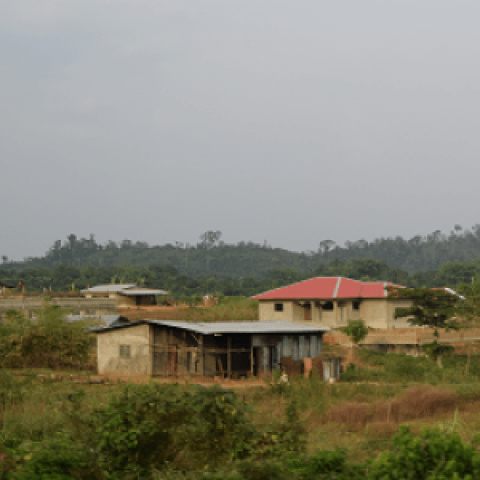The 21st Century Vision for Continental Economic Unity
Chantal Thomas
Associate Dean for Academic Affairs and Professor, Law, Cornell University
On March 21, 2018, in Kigali, Rwanda, at the 10th Extraordinary Session of the Assembly of the African Union (AU), forty-four heads of state signed an agreement establishing the African Continental Free Trade Area (AfCFTA). The AU Assembly adopted framework texts for trade in goods, trade in services, and dispute settlement, although it remains for states parties to finalize specific protocols and concessions accompanying those texts, as well as to conclude accompanying agreements on intellectual property and competition. Even with the negotiations not altogether complete, however, the AfCFTA initiative represents the most ambitious to date of many integration projects on the continent.
The Path to Integration
The AfCFTA marks an important milestone, though not the endpoint, for the vision of continental economic unity espoused by the AU’s Abuja Treaty of 1991. As a free trade area, the AfCFTA will liberalize market access amongst the signatories, but not require the harmonization of trade policy vis-à-vis third parties that is entailed by a customs union. As such, the AfCFTA articulates an intermediary point between the Abuja Treaty’s mandate for existing Regional Economic Communities (RECs) to consolidate into strong customs unions, and for those RECs then to merge into a continental customs union. [1]
The Benefits of Regionalization
The AfCFTA comes into being at a moment when a virtual consensus has emerged in development policy discourse that regionalization represents Africa’s most promising strategy for achieving sustainable economic growth. The past few years have seen a proliferation of important work in support of regional integration from numerous development agencies, such as the United Nations Economic Commission for Africa, the United Nations Conference on Trade and Development, and the African Development Bank, as well as non-governmental organizations, such as the Trade Policy Training Centre in Africa (TRAPCA), the Trade Law Centre (Tralac), the International Center for Trade and Sustainable Development (ICTSD), and Freidrich Ebert Stiftung, among others.
Strong correlative evidence points to the benefits of economic regionalization. Among other things, regionalization correlates with diversification, which is a continuing urgent need for Africa’s economies. Currently, high levels of dependence on commodities trade provide a weak foundation for development, due to these sectors’ relatively low “value-added,” and their cyclical volatility. Studies estimate that a 15% shift in African economic output towards regional integration leads to a doubling of per capita income (McKinsey Global Institute, Lions on the Move: The Progress and Potential of African Economies (2010), at p.24).
The Challenge of Political Will
Yet the AfCFTA also faces a number of challenges. First and foremost among these will be the challenge of implementation. This agreement follows many other predecessors that “remain a dead letter … without practical execution,” as AU Commission Chairperson Mahamat remarked at the March summit. Well known to the dignitaries who assembled to adopt the CFTA are the uneven degrees of success that existing RECs have achieved: while some, such as the EAC and SADC, have eliminated most or all duties amongst members of the free trade areas they have established, and in the case of the EAC have also successfully established a customs union, others retain relatively high internal tariffs (such as ECOWAS) (UNCTAD/DITC/2015/Misc.3, at p.5), and still others have seen relatively little implementation whatsoever (such as IGAD).
Among numerous implementation challenges – “variable geometry” amongst RECs with overlapping membership, coordination with infrastructural and financial development, capacity-building, and others — lies the perennial, and perhaps most fundamental, question of political will.
For this, one need look no further than Nigerian President Buhari’s last-minute decision to withdraw from the Kigali meeting. That decision points to ongoing controversy as to whether regionalization will indeed benefit African economies generally speaking, or whether it will more significantly impose local displacements similar to those that African countries have faced in a liberalizing global market. Trade unions, battered by years of bruising foreign competition, for example in the textiles industry, took their places at the Nigerian frontlines of AfCFTA opposition.
It is likely no coincidence that this opposition has peaked at a moment in which a global backlash against trade liberalization is ascendant. When the AfCFTA was launched, in 2015, the international economy was moving towards an alarming cleavage into megaregional blocs that excluded Africa, like the Trans-Pacific Partnership (TPP, now reborn sans the US as the CPTPP) and the Transnational Trade and Investment Partnership (TTIP, on indefinite hiatus). The political winds have now concertedly shifted in the opposite direction, and the global momentum towards megaregionals has significantly slowed. [2]
Even if a defensive posture is no longer as warranted, the affirmative reasons for continental economic integration remain. Yet the skepticism of non-signatories underlines the continued potency of the trade debate on a continental scale.
Such skepticism has arisen across different quarters. Large regional powers, such as Nigeria and South Africa, are concerned that competition from smaller economies will undermine their existing manufacturing capacity. Smaller economies, such as least developed countries (LDCs), landlocked developing countries (LLDCs), small and vulnerable economies (SVEs) and small island developing states (SIDs), are concerned that their more nascent capacity would be stymied by more powerful competitors.
These debates raise issues that are urgently important and deeply complex. It is worth pointing out, however, that the AfCFTA leaves policy space for governments to take these kinds of considerations into account. The agreement includes “exclusion lists” for sensitive products that will allow states to carve out protections for particular industries. More broadly, it has incorporated the principle of special and differential treatment, which will allow smaller economies to benefit from greater flexibilities due to their lesser capacity.
These varying levels of commitment should help to smooth possible disruptions caused by implementation of the AfCFTA. For those who remain committed to the vision of African unity, the key will be to ensure that they do so in a way that enhances, rather than obstructs, that ultimate objective.
Thus, some questions remain open: What is the optimal degree acceleration towards a continental common market, as envisioned by the Abuja Treaty? How extensive should integrative efforts go, e.g., should they include free movement of persons? How can AU members ensure that trade integration efforts are sufficiently supported by the finance and infrastructure necessary to support capacity-building?
[1] The African Union recognizes eight RECs: the Arab Maghreb Union (UMA), the Common Market for Eastern and Southern Africa (COMESA), the Community of Sahel–Saharan States (CEN–SAD), the East African Community (EAC), the Economic Community of Central African States (ECCAS), the Economic Community of West African States (ECOWAS), the Intergovernmental Authority on Development (IGAD), and the Southern African Development Community (SADC). Under the Abuja Treaty, the integration of these RECs into the new continent-wide free trade area will continue to deepen, first towards a customs union, then onwards to a common market, and finally into a Pan-African Economic and Monetary Union as well as a Pan-African Parliament.
[2] That said, some new transregional agreements, such as that between Canada and the European Union (CETA), are still coming into effect.



